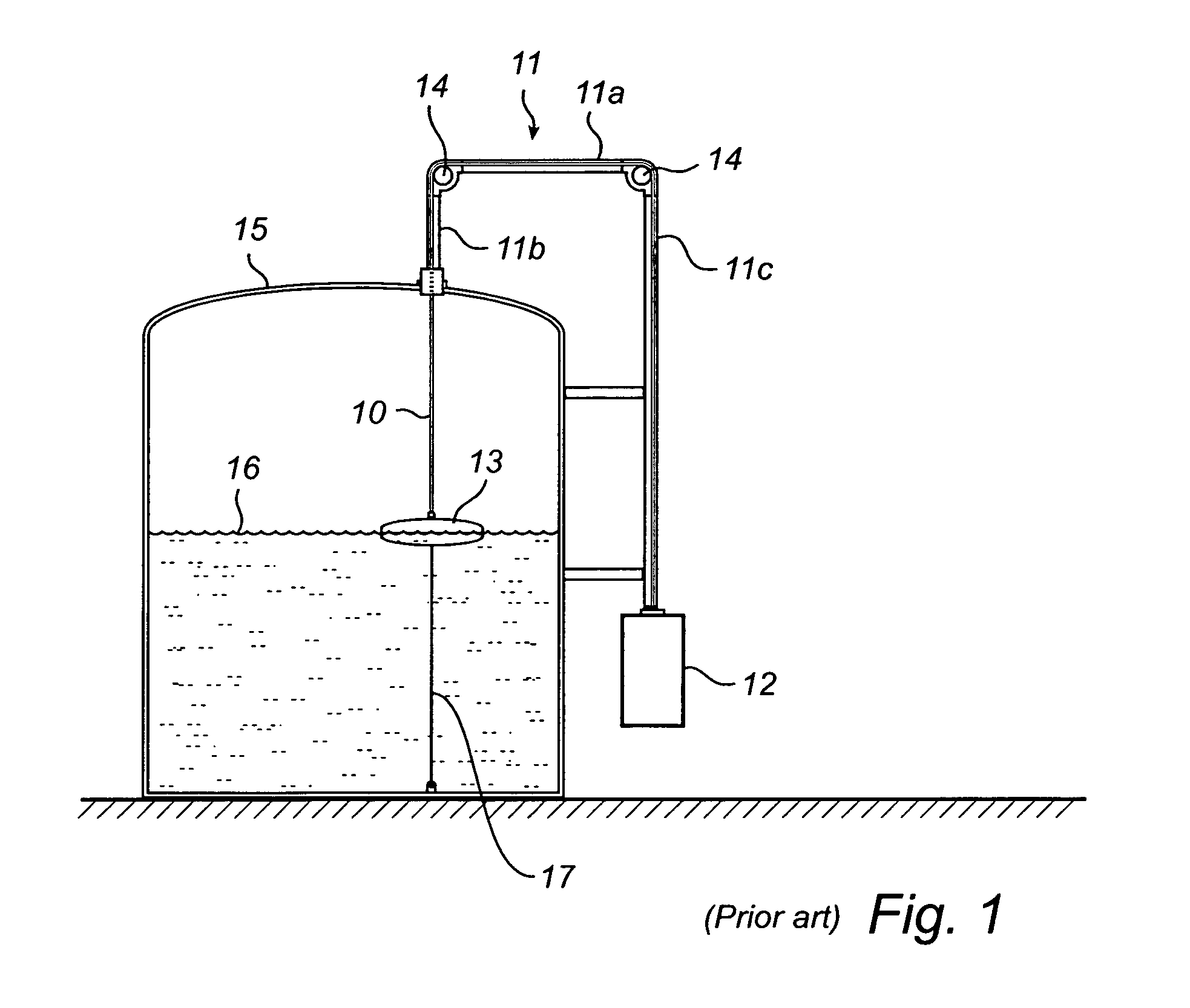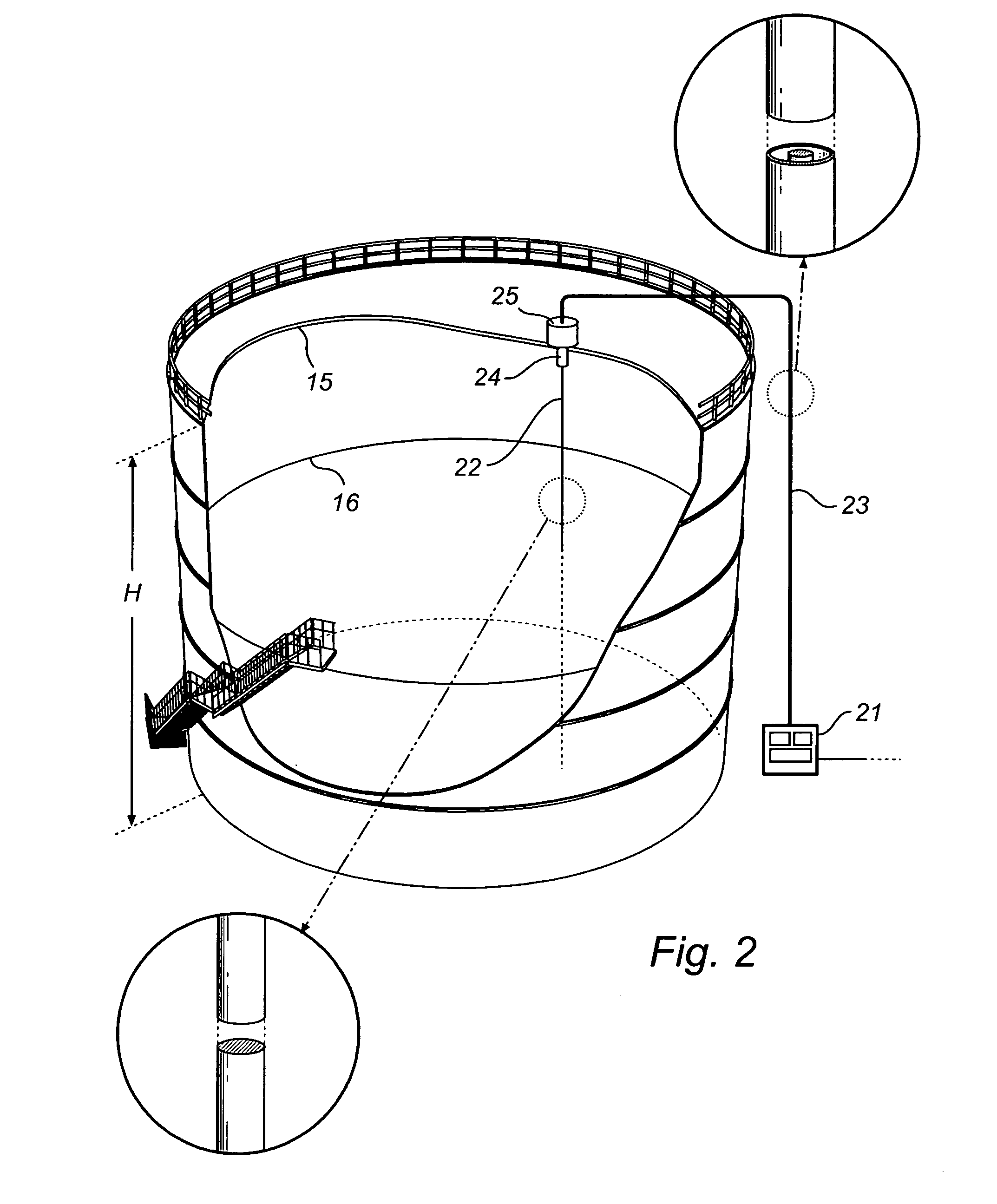Radar level gauge system
a level gauge and radar technology, applied in the direction of using reradiation, radio wave reradiation/reflection, measurement devices, etc., can solve the problems of mechanical system robustness, accuracy and reliability, movable mechanical parts are likely to malfunction, etc., and achieve the effect of low cos
- Summary
- Abstract
- Description
- Claims
- Application Information
AI Technical Summary
Benefits of technology
Problems solved by technology
Method used
Image
Examples
Embodiment Construction
[0028]FIG. 2 shows schematically a radar level gauge system according to a first embodiment. In brief, the system in FIG. 2 comprises a signaling unit 21 for transmitting and receiving radar signals and processing the received signals in order to determine the level 16 of a filling material in the tank 15. The signaling unit 21 is arranged outside the tank, and preferably close to the ground level. This position typically corresponds to the location of the housing 12 of a mechanical system, as discussed with reference to FIG. 1. A wave guide 22 is arranged within the tank, and extending vertically between the tank roof and the bottom. The tank is of a height H between the base and the roof of the tank.
[0029]The signaling unit 21 houses a transmitter for transmitting measuring signals towards the surface of the filling material in said wave guide and a receiver for receiving echo signals from the tank, as is per se known in the art. Further, the transmitter is preferably arranged to ...
PUM
 Login to View More
Login to View More Abstract
Description
Claims
Application Information
 Login to View More
Login to View More - R&D
- Intellectual Property
- Life Sciences
- Materials
- Tech Scout
- Unparalleled Data Quality
- Higher Quality Content
- 60% Fewer Hallucinations
Browse by: Latest US Patents, China's latest patents, Technical Efficacy Thesaurus, Application Domain, Technology Topic, Popular Technical Reports.
© 2025 PatSnap. All rights reserved.Legal|Privacy policy|Modern Slavery Act Transparency Statement|Sitemap|About US| Contact US: help@patsnap.com



